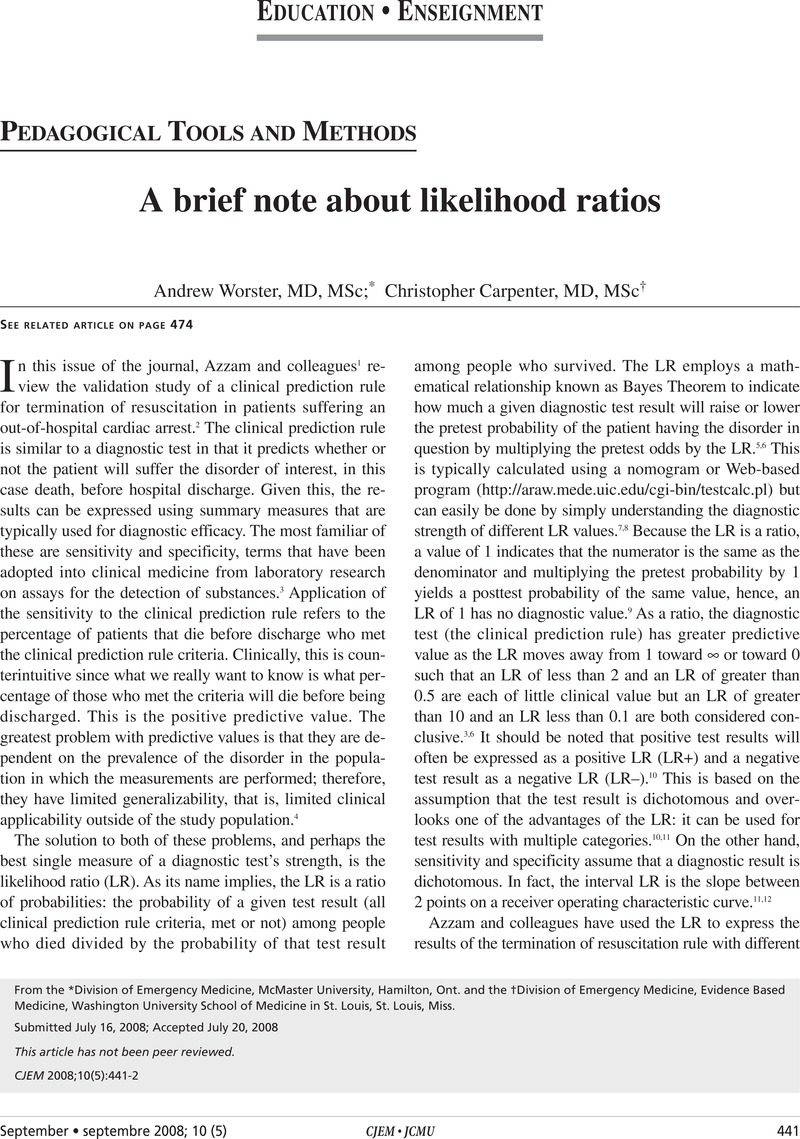Crossref Citations
This article has been cited by the following publications. This list is generated based on data provided by Crossref.
Carpenter, Christopher R.
Kaphingst, Kimberly A.
Goodman, Melody S.
Lin, Margaret J.
Melson, Andrew T.
Griffey, Richard T.
and
Pines, Jesse
2014.
Feasibility and Diagnostic Accuracy of Brief Health Literacy and Numeracy Screening Instruments in an Urban Emergency Department.
Academic Emergency Medicine,
Vol. 21,
Issue. 2,
p.
137.
Yunilda, Erva
Gunardi, Hartono
Medise, Bernie Endyarni
and
Oswari, Hanifah
2023.
The Indonesian version of Ages and Stages Questionnaire III accuracy compared to Bayley Scales of Infant Development III.
Infant and Child Development,
Vol. 32,
Issue. 1,
Rodriguez, Nicole M.
Mower, William R.
Raja, Ali S.
Gupta, Malkeet
Montoy, Juan Carlos
Parry, Blair
Chan, Virginia
Wong, Angela H. K.
Wilcox, James
Quiñones, Alexandra
and
Rodriguez, Robert M.
2023.
Accuracy of physician gestalt in prediction of significant abdominal and pelvic injury in adult blunt trauma patients.
Academic Emergency Medicine,
Vol. 30,
Issue. 10,
p.
1039.





